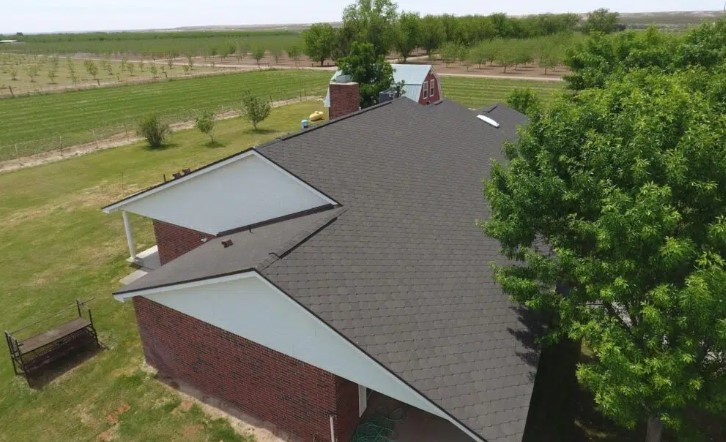
Residential roofs aren’t supposed to last forever. Depending on the roofing material you use, you might have to replace it as soon as 25 years after it was installed.
But you might be wondering: what does the roof replacement process entail? And, even more, what are the signs that a residential roofing replacement is needed?
We’re going to answer all of those questions and more below. Take it from a professional roofer: here is what every homeowner needs to know about residential roofing replacement.
Roof Replacement Options
There are quite a few different roof replacement options on the market today, each of which comes with different upsides and downsides. Some of the most popular of these options include:
Asphalt Shingles
Of all the residential roofing materials in existence, asphalt shingles are easily the most popular. The reason for their popularity? Affordability! Asphalt shingles are cheap to purchase and provide a good deal of bang for their buck.
Generally speaking, asphalt shingles last around 25 years. If cleaned regularly, they can make it up to 30 years (and sometimes beyond). Available in a variety of shapes and colors, there’s sure to be a set that matches the style of your house.
Metal Roofing
An option that’s grown in popularity of late is metal roofing. Metal roofing possesses a sleek and modern appearance. Available in several colors, it can match essentially any home.
It lasts around 50 years and doesn’t require much maintenance to get that far. Tough and insulating, it rarely incurs damage and does a terrific job of maintaining the home’s internal temperature.
The Roof Replacement Process
There are several different steps involved in the roof replacement process. We’re going to cover them all in detail now.
Protection Implements Are Established
Before your roofer actually starts replacing your roof, they will set up protection implements so that your siding, plants, and other possessions aren’t damaged during the replacement. In most cases, tarps are used to catch falling roofing materials.
The Existing Roofing Material Is Removed
Next, the roofing company will remove the existing roofing material from your roof. Whether this material is shingles, shakes, metal panels, or otherwise, it will be properly disposed of in a dumpster or other waste receptacle.
The Structural Components of the Roof Are Inspected
After the existing roofing material is removed, the roofer will inspect the structural components of the roof. This is done to ensure that there are no soft or decaying spots. If there are, they will need to be replaced prior to the new material being installed.
Drip Edge Is Installed
Next, a drip edge is installed at the edges of the roof. Drip edge is metal flashing that turns at a 90-degree angle. It keeps the water in gutters from spilling over and getting under your roofing material.
Water/Ice Shields Are Installed
After the drip edge has been installed, water/ice shields will be installed. A water shield is an adhesive material that sticks straight to the decking of the roof. Its purpose is to prevent moisture from damaging the decking below.
Once the water/ice shield has been installed, a layer of heavy-duty felt is installed over it. This provides another level of protection and also prevents the roofing material from sticking to the wood.
The New Roofing Material Is Installed
Finally, the new roofing material can be installed. Most roofing materials are held down with nails so as to ensure that they aren’t easily knocked off or blown away. Regardless of the material you choose, it will be installed with both functionality and aesthetics in mind.
The Area Is Cleaned Up
Now that the roof has been replaced in its entirety, the crew will clean up the work area. Everything from nails to shingles to sheathing will be picked up and disposed of in a dumpster or other waste receptacle. Once everything is picked up, the project will be complete.
Signs You Need a Roof Replacement
There are several signs that could indicate the need for a roof replacement. For instance, is your roof missing several shingles in different areas? If so, a full roof replacement might be needed.
Maybe there are cracks in your shingles? Again, this would necessitate a roof replacement. The same goes for warped and misshapen shingles, as these aren’t able to provide adequate insulation or water protection.
Perhaps your energy bills have been getting higher and higher? While it’s not a certainty, this could be a consequence of a deteriorated (and therefore less energy efficient) roof.
Have you been up in your attic lately? Notice any sunlight poking through the roof? If so, the roof, at the very least, requires repair. Replacement might be necessary as well.
You should also keep track of your roof’s age. If it goes past its expected lifespan, it’s likely going to need to be replaced soon. For reference, asphalt shingles last between 25 and 30 years, cedar shakes last between 30 and 40 years, and metal roof lasts between 50 and 60 years.
If you need any assistance determining whether it’s time for a roof replacement, give a call to an expert roofer in your area. They’ll assess your roof and determine whether it would best benefit from a repair or a replacement.
Do You Need a Roof Replacement in El Paso?
Are you in need of a roof replacement? Looking for a professional roofer in El Paso? If so, look no further than Smith & Ramirez Roofing.
We’ve replaced countless roofs throughout the El Paso area and offer a variety of roof replacement options. We work with GAF roofing materials, all of which come with warranties.
Contact us now for more information or to schedule your replacement!
Subscribe to Smith and Ramirez Roofing's Blog





Comments